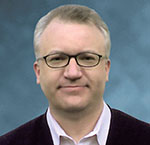Bill Siwicki
The CEO of Biotricity, which recently secured National Institutes of Health funding to prove out some of its remote patient monitoring tech, offers a deep dive into RPM for kidney and heart illnesses.
Improvements can upset the apple cart for clinicians. An expert at EHR maker athenahealth offers advice on how to make sure the patient and clinician experiences both are top-notch.
The health system has been able to do 7% more surgical cases despite having to close 20% of its ORs at times. The organization now is meeting or exceeding budgeted volumes.
The biggest achievement via the new virtual care workflow has been increased productivity, enabling providers to see more patients in less time.
Doug Duskin, CEO of Avel eCare, offers a look at the learnings that came out of his company's first annual conference.
Everything starts with understanding the basics and doing them flawlessly, one cybersecurity expert advises. But there is much more work to be done.
With workforce shortages stretching staff thin, the technology helps engage new candidates, shorten time-to-fill and enable new hires success, says the health system's chief talent acquisition officer.
"We've been able to minimize interruptions to hospital operations and patient care, foster ongoing healthcare innovations with AI and analytics, and allow clinicians to access medical data in seconds," a tech director says.
Robin Farmanfarmaian, a Silicon Valley AI entrepreneur and author, explains how artificial intelligence can boost the efficacy of RPM and help democratize healthcare.
The academic medical center's physician chief of maternal fetal medicine explains how remote patient monitoring technology improves care during a very sensitive time in a woman's life.










